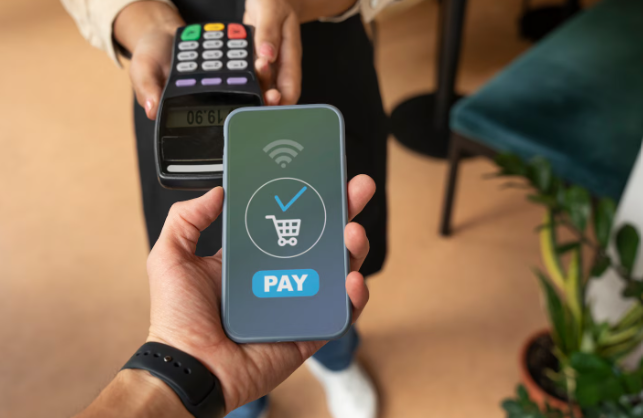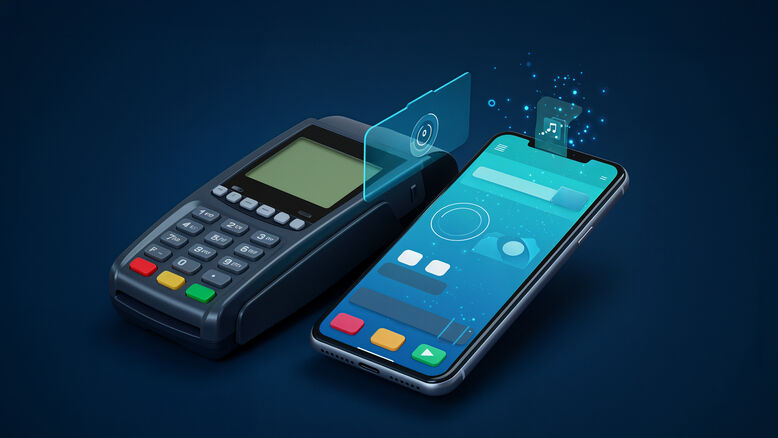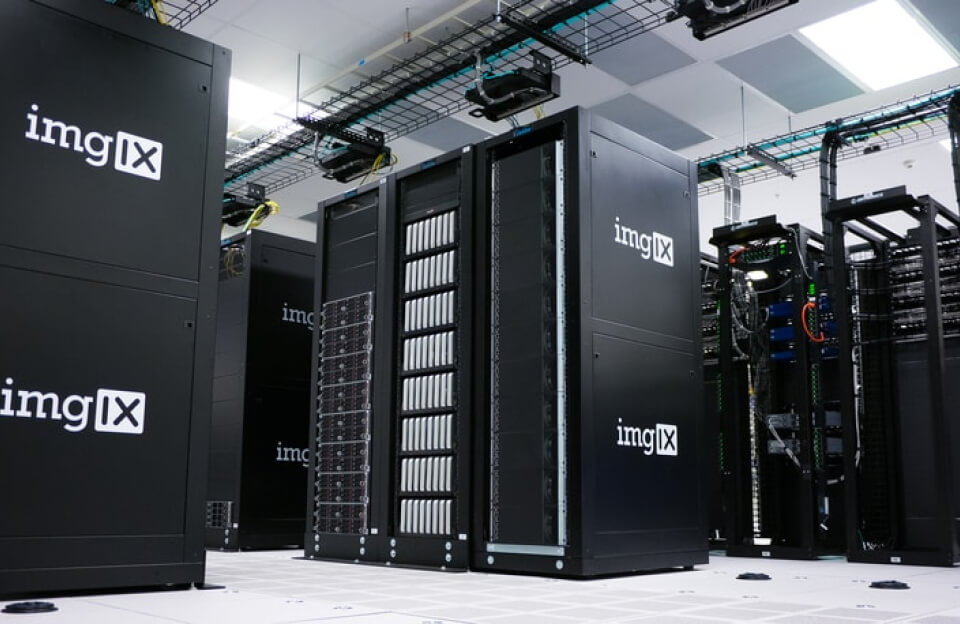Digital Payments Fintech comprises processes affecting everything related to how Americans spend, send, and save money in this New Age. From contactless cards to mobile wallets, and now, instant transfers, financial technology has been slowly morphing the U. S. finance system.
What once took days is now executed in a matter of seconds. Besides, those tasks that needed a personal visit to the bank are now being done with a tap on a phone.
This change, thus, is not limited to mere convenience; it is a total change in the financial behavior of America. Digital payments are embraced by both consumers and businesses for faster transactions, better security, and ease of accessing financial services.
In this article, we first discuss what Digital Payments Fintech is, then explore why it has been booming across the United States, and finally explain how it is shaping the finance of tomorrow.
What Is Digital Payments Fintech?
To understand this concept, let’s dissect the term Digital Payments Fintech.
- Digital payments are transactions made online or through an application on the phone.
- Fintech–or financial technology–means innovations that improve or automate financial services.
Combining these two creates Digital Payments Fintech: a vibrant system that moves money through modern technology.
This ecosystem includes PayPal, Venmo, Stripe, Zelle, and Apple Pay, among others; moreover, the opportunities for instant money transfer are compatible with several banks, making transactions faster and more convenient.
Fintech tools help businesses receive payments securely and give consumers easy, safe options for daily transactions.
Why Digital Payments Fintech Is in Such a Fast-Moving Pace
Two or more exist to explain the rapid pace at which Digital Payments Fintech is being carried out in the United States.
- Changing Market Preferences
What Americans value most is convenience. With technology providing faster and secure transactions that also do not need cash as an option, people want to complete their transactions quickly. Mobile wallets like Apple Pay and Google Pay have saved both time and the need for the usage of physical cards by allowing users to tap once and make payments.
- E-Commerce Explosion
When online shopping is beyond bounds, so are its payment solutions. And a greater number of consumers means greater demand for less complicated and safer payment options. That has led fintech companies to work on digital solutions to check out that are far more rapid and secure.
- Adoption of Mobile Banking
Banks that are traditional have now jumped on the bandwagon of partnering with fintechs to reengineer their platforms. For one, the Federal Reserve of the United States went live in 2023 with FedNow, which facilitates instant money transfers between banks at any time of the day.
- The Rise of Cashless Transactions
Going cashless in America is an increasingly accepted behavior, from local cafes to large retail outlets. Businesses prefer digital payments as these speed transaction processing while minimizing theft.
- Pandemic and After-Effects: Pandemic Technologies and Their Growth
The COVID-19 pandemic accelerated the change. Customers were shying away from accepting cash due to hygiene considerations, and then quickly saw how convenient digital options were.
Presently, almost 90 percent of Americans are users of at least one form of Digital Payments Fintech.

How Digital Payments Fintech Works for Businesses
Digital payments Fintech, for American businesses, do not exist as options anymore. It has thus become integral to long-term growth and success.
- Quicker Transactions
This ecosystem includes PayPal, Venmo, Stripe, Zelle, and Apple Pay, among others; moreover, the opportunities for instant money transfer are compatible with several banks, making transactions faster and more convenient.
- Less Processing Charges
The Fintech payment platforms usually charge less than what traditional credit card processors would. Thus, merchants can still save money while granting their customers more payment options.
- Better Customer Experience
An end-user nowadays will demand speed and simplicity during checkout. Digital payment systems, therefore, help to reduce checkout friction and increase customer satisfaction.
- Customer Insights Alternative
Each digital transaction generates significant data; the additional fintech tools help businesses to analyze those insights and detect consumer behavior, forecast demand, and target promotions.
- Easier Global Reach
Many fintech platforms now allow international transfers. Thus, even if a small business is in the United States, it can expand its reach and sell to international customers with ease.
A Few Key Recently Emerging Trends in 2025 Shaping Digital Payments Fintech
The Digital Payments Fintech landscape in 2025 is becoming quicker to change. Every so often, new trends have appeared to shape the way Americans send money.
- Real-Time Payments
The FedNow Service is a game-changer for financial transactions. With real-time payments, money is transferred on the spot, thereby allowing payroll to be processed fast, payments given as refunds instantly, and businesses to make payments efficiently, anytime, including weekends and holidays.
- Growth in Mobile Wallets
Mobile wallets such as Apple Pay, Google Pay, and Samsung Pay now dominate. They provide a broad range of services, including payments, loyalty rewards, digital receipts, and enhanced security.
- Embedded Finance
One of the fastest-growing categories in the payment sector is embedded payments. To cite a simple example, they charge you automatically for an Uber fare and process payments at Amazon checkout instantly. Such integrations create a smoother customer experience.
- Buy Now, Pay Later
BNPL services like Affirm and Afterpay are changing the way retail payments are handled. Consumers get flexible financing options whilst retailers receive better conversion rates and higher sales.
- AI and Security Innovations
Artificial intelligence lends a hand for anti-fraud prevention. From there, the fintech platforms employ the machine learning algorithm to look out for suspicious activities and secure user data on time.
- Crypto and Blockchain Adoption
On the other hand, for the adoption of blockchain for payments, some momentum is also being given to code cross-border money transfers somewhat faster, somewhat cheaper to quantify international businesses.
Advantages of Digital Payments Fintech for Consumers
If you are an everyday American, Digital Payments Fintech offers you flexibility, control, and secure environments.
- Easy and Fast
Paying the bills or shopping online is probably one of the easiest things to do. Transactions are secured and completed instantaneously with just a few taps.
- Instant Money
One cool thing about real-time payments is that users can get funds instantly. The days when people were paid after many days of depositing are leaving.
- Better Financial Management
Fintech apps provide tools to track one’s spending division budgeting, and perhaps even automate savings. Consequently, it is a win-win situation wherein all the users gain control over their finances.
- Greater Security
Digital payments give an extra layer of security employing encryption, tokenization, and biometrics, so they provide a considerable security option against data breaches and fraud.
- Greater Accessibility
Digital Payments Fintech platforms now provide financial tools to underbanked Americans by the millions. This helps with inclusion and financial equality.
Challenges Facing the Digital Payments Fintech Industry
Despite its successes, the Digital Payments Fintech Industry continues to face challenges.
- Cybersecurity risks: Hacking has become more sophisticated since transactions became online. So, it is a constant challenge for the fintech companies to stay secure.
- Regulatory Hurdles: Financial laws in the States are very stringent, and viability is at stake for fintech firms, moving through a neck-twisting maze of state and federal regulations.
- Even advancement pressures and obstacles lead industry leaders to keep on finding ways of increasing safety, inclusion, and compliance.
- System Integration Issues: Many businesses still use outdated payment systems that are difficult to modernize.
- Digital Divide: There are some Americans without access to good internet service or digital devices. As a result, not all can avail themselves of all the advantages offered by fintech.
The Future of Digital Payments Fintech in the U.S.
Whatever Digital Payments Fintech is about to do in the future, it will continue transforming the U. S. economy.
- Seamless Integration
Payments will become invisible yet effortless. Incorporated into every app, car, or device one uses day-to-day.
- Global Connectivity
Cross-border transactions become faster and cheaper; hence, transactions for international business shall proceed more smoothly than ever before.
- AI-Personalization
Artificial intelligence will personalize financial services according to each entity’s payment habits. Hence, payment systems will become more intelligent and self-adaptive.
By 2030, experts predict that more than 80% of consumer payments in the U. S. will be digital. So clearly, said the industry experts, fintech is not just the future — it is already the pulse of modern finance.
Conclusion
Developments from Digital Payments Fintechs rank among the most important shifts in American financial history, making payments faster, safer, and efficient overnight.
For the customer, it assumes convenience and control. For the enterprises, it brings less cost and smart insight. And, for the U. S. economy, it makes a more inclusive and innovative financial setting.
In short, changing how Americans live, work, and pay will be continuously affected by Digital Payments Fintech. Along with evolving technologies, the U. S. is slowly but tightly stitched into a complete digital cashless future — one transaction at a time.



